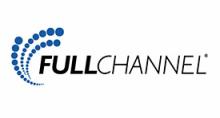
Fast, affordable Internet access for all.

We are pleased to bring you a guest post from Levi C. Maaia, president of Full Channel Labs and a graduate research fellow at the Center for Education Research on Literacies, Learning & Inquiry in Networking Communities (LINC) at the University of California, Santa Barbara. Levi is a strong advocate for local, family owned businesses and an open Internet without government or corporate gatekeepers.
The Other Half of Net Neutrality Regulation
The Internet was originally founded on principles of public service and education. In the past two decades, tremendous commercial potential has also been realized and the Internet is now the engine behind our new global economy. This potential, however, is predicated on the network’s original open and neutral methods of communication.
Properly implemented net neutrality regulation has the potential to maintain a level online playing field for all 21st century industries, which rely on the Internet for all types of electronic communications and financial transactions. However, Chairman Wheeler's recent plan to enforce net neutrality through the invocation Title II authority ignores practices by some content providers that threaten the economic viability and expansion of affordable high-speed and gigabit access. A notable example of this practice is how online content is delivered under the ESPN3 brand.
ESPN3 is an online-only sports television network owned by The Walt Disney Company and the Hearst Corporation. Unlike with other online video services such as Netflix and Amazon Instant Video – where consumers choose to pay for content and access it directly – ESPN3 streaming content is available only to customers of ISPs that pay per-subscriber fees to ESPN for each of their Internet customers. If an ISP refuses to pay these fees for some or all of its user base, all of its customers are blocked from accessing ESPN3’s online content. Through the imposition of this legacy cable TV licensing approach ESPN3 is attempting to force ISPs into negotiating content deals in the same way that cable TV providers must do for broadcast retransmission consent and cable network licensing fees.
As cord-cutters drop their cable and satellite subscriptions in favor of online streaming, TV networks are scrambling to compensate for this lost revenue. ESPN3 is doing so by imposing a cable TV-like payment structure on Internet delivery using a model that congress and consumers have decried for decades as inflexible and expensive. These additional costs are already being factored into Internet service pricing, as ESPN3 reaches deals with the Internet providers of tens of millions of customers. If ESPN continues to be successful with this model, we can expect that other content providers will follow suit and it may not be just the cable TV networks that adopt this method. ISPs might be compelled to negotiate per-subscriber fees for access to content across the Web.
The FCC’s Network Neutrality approach means that ISPs cannot demand payment from content owners to reach customers. However, it is silent on whether content owners can demand the ISP pay a fee for every subscriber on its system, regardless of how many subscribers actually desire the content in question.
Without content neutrality protection as part of the FCC’s regulatory approach, we may see the current a-la-carte, merit-based model of the Internet disappear in favor of a system where payment demands for content are forced on consumers by media giants. This would likely result in skyrocketing prices for Internet access akin to that of cable TV which has risen in cost more than four times the rate of inflation over the past 15 years! This could have a crippling effect on all industry, especially small businesses and startups. Practices like those by ESPN3 pose just as great a threat to broadband and fiber deployment, affordability and access as a lack of other aspects of net neutrality regulation do.
Indeed, content neutrality is the other half of the net neutrality issue and it must be addressed. And much like the fundamental issue behind network neutrality, a few incredibly large firms with tremendous market power are the primary threat.
In 2004, Levi Maaia joined Full Channel, a family-owned broadband provider in Bristol County, R.I. Under his leadership, Full Channel successfully turned around a declining subscriber base while making its first forays into digital and high-definition television, IP telephony and renewable energy solutions.
In 2008, he developed and launched Full Channel’s renewable wind energy initiative GreenLink through a partnership forged with sustainable energy provider People’s Power & Light. As a result, cable industry trade publication CableFAX honored Full Channel with its 2009 Top Ops Community Service Award. In 2012, Levi formed Full Channel Labs, an online innovation and technology partner, which develops and supports advances in networking and digital technologies.
